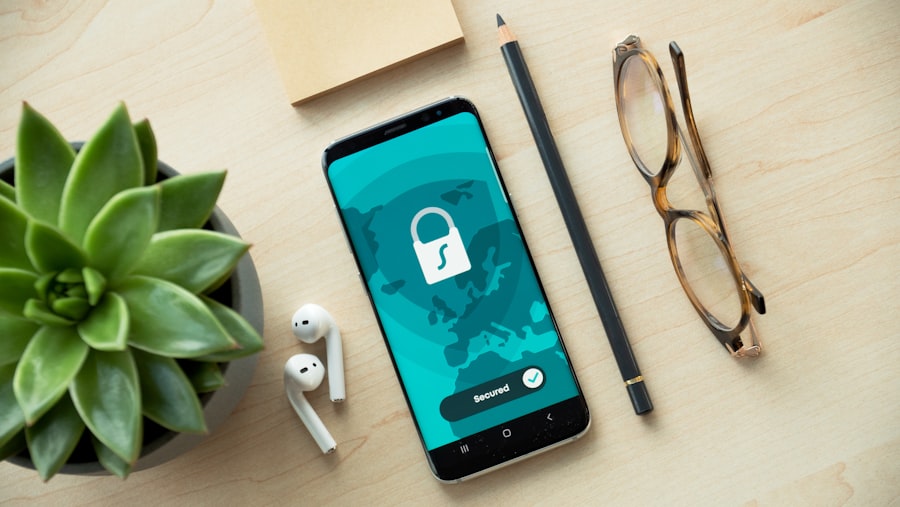
The internet has revolutionized the way we communicate, learn, and conduct business, but it has also introduced a myriad of dangers that can affect users of all ages. As we navigate this digital landscape, it is crucial to understand the potential risks that lurk behind the convenience of online interactions. From identity theft to cyberbullying, the threats are diverse and can have serious consequences for individuals and communities alike.
The anonymity afforded by the internet can embolden malicious actors, making it essential for users to be vigilant and informed about the dangers they may encounter. Moreover, the rapid evolution of technology means that new threats are constantly emerging. Cybercriminals are becoming increasingly sophisticated, employing advanced tactics to exploit vulnerabilities in software and human behavior.
This dynamic environment necessitates a proactive approach to internet safety, where users not only recognize existing threats but also anticipate future risks. By fostering a culture of awareness and education, individuals can better protect themselves and their loved ones from the myriad dangers that the internet presents.
Key Takeaways
- The internet poses various dangers that can compromise personal information and safety.
- Online threats can come in the form of malware, phishing, scams, and cyberbullying.
- Protect personal information by using strong passwords, being cautious with sharing information, and using secure websites.
- Safe social media practices include being mindful of what is shared, setting privacy settings, and being cautious of friend requests from strangers.
- Recognize phishing and scams by being cautious of suspicious emails, messages, and websites.
Identifying Online Threats
Identifying online threats requires a keen understanding of the various forms they can take. One of the most prevalent threats is malware, which encompasses a range of malicious software designed to disrupt, damage, or gain unauthorized access to computer systems. Malware can manifest as viruses, worms, trojans, or ransomware, each with its own method of infiltration and impact.
For instance, ransomware encrypts a user’s files and demands payment for their release, often leaving victims in a state of panic and financial distress. Recognizing the signs of malware infection—such as slow system performance, unexpected pop-ups, or unfamiliar programs—can help users take swift action to mitigate damage. Another significant threat is social engineering, where attackers manipulate individuals into divulging confidential information.
Phishing attacks are a common form of social engineering, often executed through deceptive emails or messages that appear legitimate. These communications may prompt users to click on malicious links or provide sensitive information under false pretenses. Understanding the tactics employed by cybercriminals is essential for identifying these threats before they can cause harm.
Users should be aware of red flags such as poor grammar, generic greetings, or urgent requests for personal information that may indicate a phishing attempt.
Protecting Personal Information

In an age where personal information is often shared freely online, protecting this data has become paramount. One of the most effective strategies for safeguarding personal information is to limit what is shared on public platforms. Users should be mindful of the details they post on social media, including location tags, contact information, and even seemingly innocuous details like birthdates or pet names that could be used to answer security questions.
By adjusting privacy settings and being selective about what is shared publicly, individuals can significantly reduce their exposure to potential threats. Additionally, employing strong passwords is a critical component of protecting personal information. Weak passwords are easily compromised, making it essential to create complex combinations of letters, numbers, and symbols.
Utilizing password managers can help users generate and store unique passwords for different accounts, reducing the likelihood of a single breach compromising multiple services. Furthermore, enabling two-factor authentication (2FA) adds an extra layer of security by requiring a second form of verification—such as a text message code or authentication app—before granting access to an account.
Safe Social Media Practices
| Safe Social Media Practices | Metrics |
|---|---|
| Use of Privacy Settings | Percentage of users who regularly review and update their privacy settings |
| Verification of Contacts | Number of users who verify the identity of new contacts before accepting friend requests |
| Avoidance of Sharing Personal Information | Percentage of users who refrain from sharing personal information such as address, phone number, and financial details |
| Reporting Inappropriate Content | Number of reports submitted for inappropriate or harmful content |
| Regular Password Updates | Percentage of users who update their social media passwords regularly |
Social media platforms have become integral to modern communication, but they also pose unique risks that users must navigate carefully. One fundamental practice for safe social media use is to regularly review and update privacy settings. Most platforms offer customizable options that allow users to control who can see their posts and personal information.
By restricting access to friends or approved followers only, individuals can minimize the risk of unwanted attention from strangers or potential predators. Another important aspect of safe social media practices is being cautious about friend requests and interactions with unknown users. Cybercriminals often create fake profiles to gain trust and extract personal information from unsuspecting individuals.
Users should be skeptical of friend requests from people they do not know personally and should avoid sharing sensitive information with anyone they have not verified as trustworthy. Additionally, reporting suspicious accounts or content can help maintain a safer online environment for everyone.
Recognizing Phishing and Scams
Phishing scams have become increasingly sophisticated, making it essential for users to develop skills in recognizing these deceptive tactics. One common method involves emails that appear to come from reputable organizations, such as banks or government agencies, urging recipients to take immediate action regarding their accounts. These emails often contain links that lead to counterfeit websites designed to harvest login credentials or personal information.
Users should always verify the sender’s email address and look for inconsistencies in the message before clicking on any links. Another prevalent form of phishing is spear phishing, which targets specific individuals or organizations with personalized messages that increase their credibility. Attackers may gather information from social media profiles or previous interactions to craft convincing emails that appear legitimate.
To combat this threat, users should be cautious about sharing personal details online and should educate themselves on the latest phishing techniques.
Cyberbullying and Online Harassment

Cyberbullying has emerged as a significant concern in the digital age, affecting individuals across various demographics. Unlike traditional bullying, which often occurs in physical spaces like schools or workplaces, cyberbullying can happen anytime and anywhere through digital platforms. Victims may experience harassment through social media posts, text messages, or online forums, leading to severe emotional distress and mental health issues.
Addressing cyberbullying requires a multifaceted approach involving education, awareness, and intervention. Schools and communities must implement programs that teach empathy and digital citizenship to help prevent bullying behaviors before they start.
Additionally, victims should be encouraged to report incidents to trusted adults or authorities who can take appropriate action. Many social media platforms have reporting features specifically designed to address harassment and bullying, allowing users to block offenders and seek assistance in creating a safer online environment.
Securing Devices and Networks
Securing devices and networks is fundamental in protecting against various online threats. One effective strategy is to keep all software up-to-date, including operating systems, applications, and antivirus programs. Software developers frequently release updates that patch vulnerabilities exploited by cybercriminals; failing to install these updates can leave devices susceptible to attacks.
Users should enable automatic updates whenever possible to ensure they are always protected against the latest threats. In addition to software updates, utilizing firewalls can provide an additional layer of security for home networks. Firewalls act as barriers between trusted internal networks and untrusted external networks, monitoring incoming and outgoing traffic for suspicious activity.
Configuring routers with strong passwords and disabling remote access features can further enhance network security. Users should also consider using virtual private networks (VPNs) when accessing public Wi-Fi networks to encrypt their internet connection and protect sensitive data from potential eavesdroppers.
Seeking Help and Reporting Online Threats
When faced with online threats or harassment, seeking help is crucial for ensuring safety and well-being. Many organizations offer resources for individuals experiencing cyberbullying or other forms of online abuse. For instance, organizations like StopBullying.gov provide guidance on how to respond to bullying incidents and connect victims with support services.
Additionally, law enforcement agencies are increasingly equipped to handle cybercrime cases; reporting incidents can help authorities track patterns of abuse and take action against offenders. Reporting online threats is not only essential for individual safety but also contributes to creating a safer digital environment for everyone. Most social media platforms have built-in reporting mechanisms that allow users to flag inappropriate content or behavior.
By utilizing these tools, individuals can help protect themselves and others from harmful interactions while holding offenders accountable for their actions. Engaging in community discussions about online safety can also foster a culture of awareness and support among peers, encouraging collective efforts to combat online threats effectively.
If you are interested in learning more about staying safe online, you may want to check out the article “Hello World” on the VESL website. This article discusses the importance of internet safety and provides tips on how to avoid online dangers. You can read the full article here.
FAQs
What are some common internet dangers to be aware of?
Some common internet dangers include phishing scams, malware and viruses, online predators, identity theft, cyberbullying, and fake websites.
How can I protect myself from internet dangers?
You can protect yourself from internet dangers by using strong and unique passwords, being cautious of suspicious emails and links, keeping your software and antivirus programs up to date, being mindful of what personal information you share online, and using privacy settings on social media.
What is phishing and how can I avoid falling for it?
Phishing is a type of online scam where attackers try to trick individuals into providing sensitive information such as usernames, passwords, and credit card details. To avoid falling for phishing scams, be cautious of unsolicited emails or messages asking for personal information, and verify the legitimacy of the sender before clicking on any links or providing any information.
What should I do if I encounter online harassment or cyberbullying?
If you encounter online harassment or cyberbullying, it’s important to document the incidents, block the individuals involved, and report the behavior to the appropriate platform or authorities. It’s also important to reach out for support from friends, family, or professionals if needed.
How can I spot fake websites and avoid falling for online scams?
You can spot fake websites by checking for secure connections (https://), looking for spelling and grammar errors, verifying the legitimacy of the website’s contact information, and being cautious of deals that seem too good to be true. It’s important to only make online purchases from reputable and secure websites.


